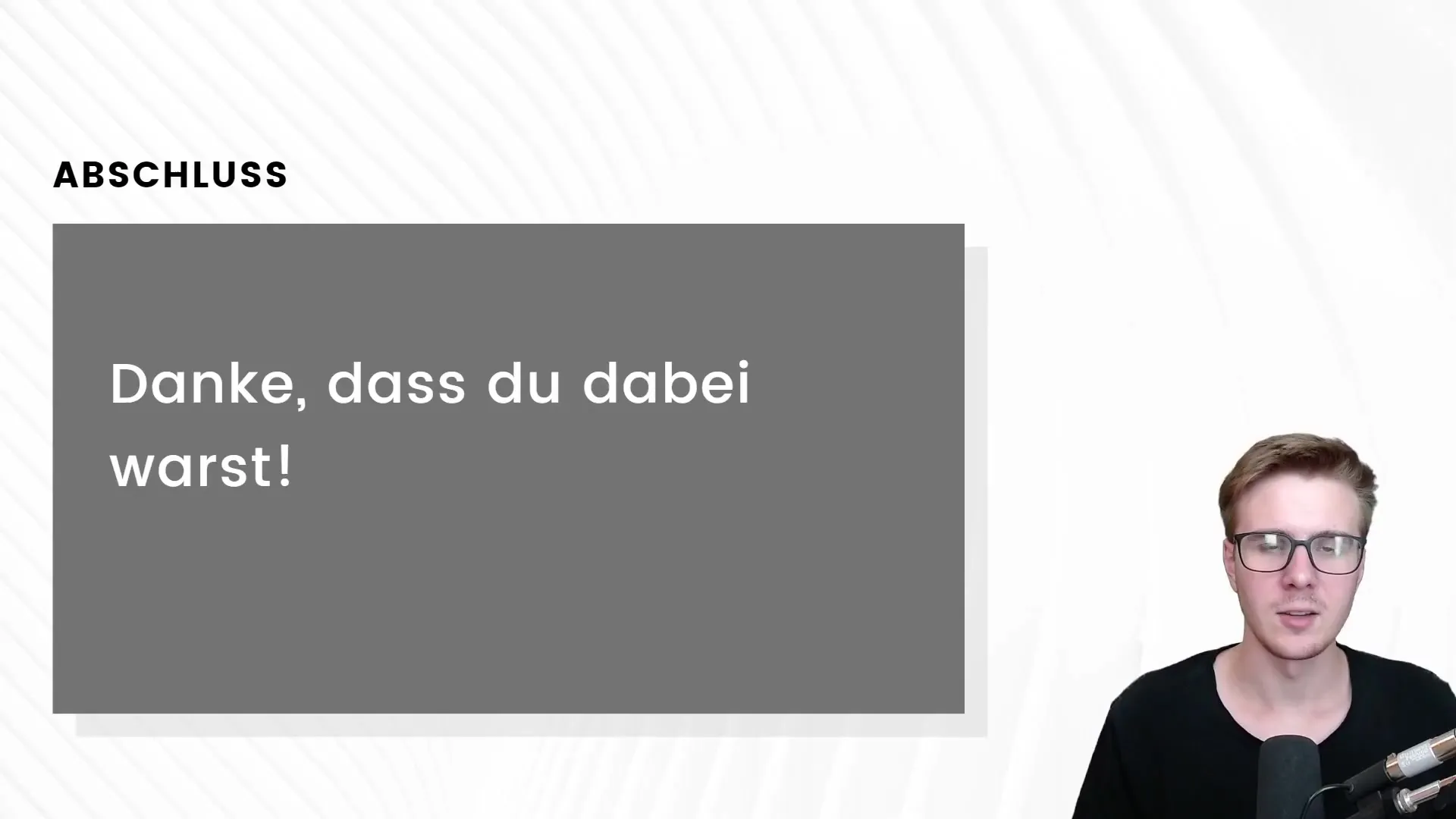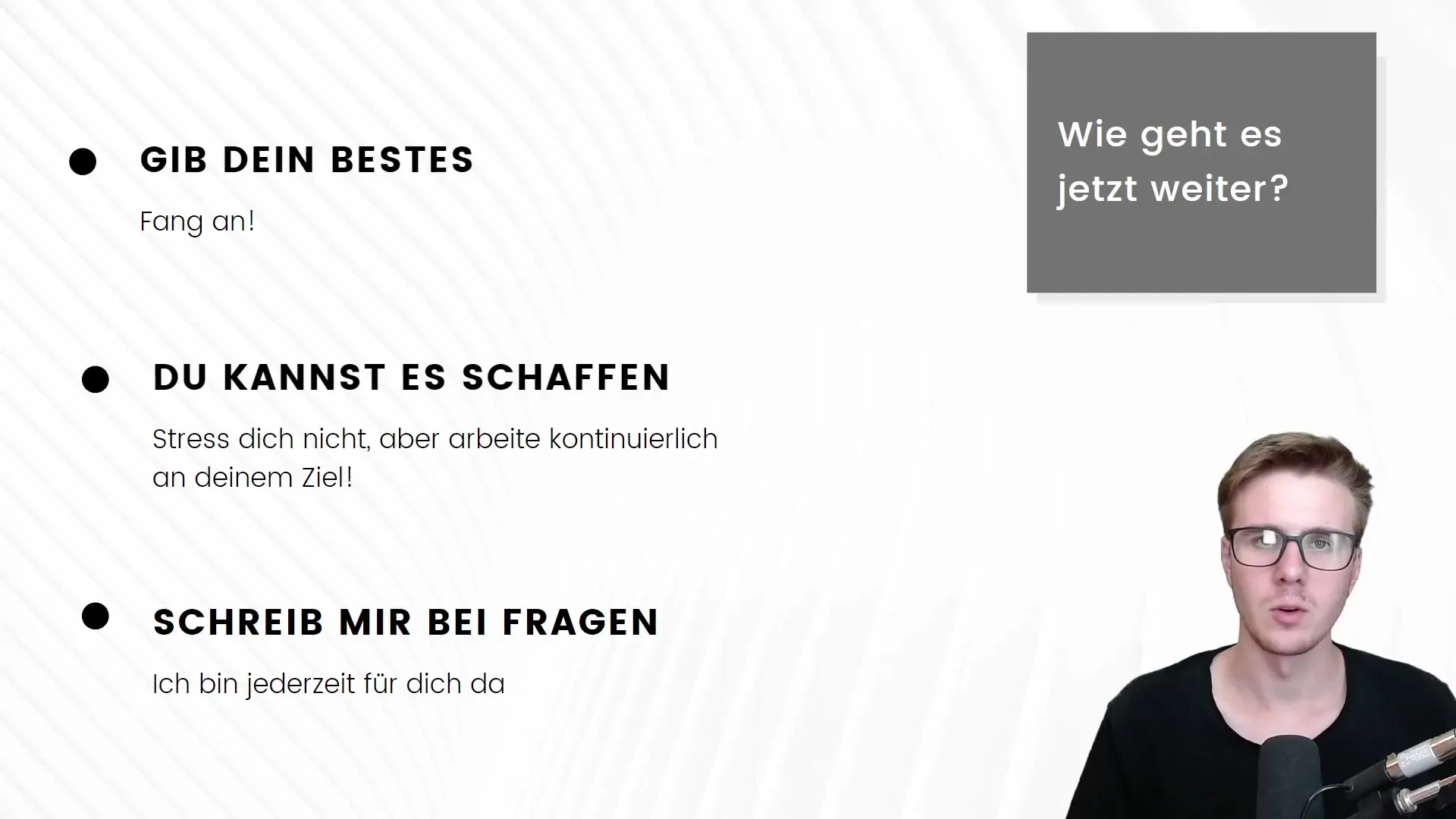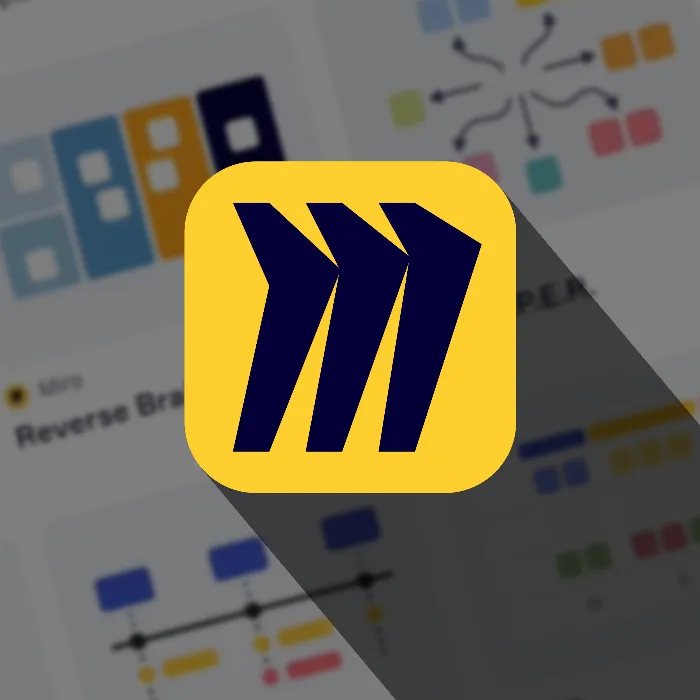The completion of a video course is always a significant moment. You have invested time and effort to learn and internalize the content. In this final section of my Miro tutorial, I want to encourage you to put what you have learned into practice and continue your journey. It is crucial that you do not just consume passively but actively work on expanding your knowledge.
Key Insights
- Set goals and establish a clear plan on how you want to apply what you have learned.
- Regular practice is the key to success – divide your study time.
- Do not hesitate to ask questions and seek support if needed.
Step-by-Step Guide
Step 1: Applying Theoretical Knowledge
It is crucial that you actually implement what you have learned. Theoretical knowledge alone is not sufficient; it must be put into practice. Start by actively addressing the challenges that come your way.

The idea of applying what you have learned immediately will help deepen your understanding. Use the features of Miro to plan projects or sketch ideas. By applying your knowledge, you will make progress more quickly.
Step 2: Establish Regular Learning Intervals
I recommend setting fixed times for your learning and practice. Whether you want to invest half an hour daily or several hours once a week – the main thing is to stay consistent. Smaller, regular learning sessions are often more effective than long, one-time sessions.

By spreading your learning over a longer period, you give your brain the opportunity to process and store information more effectively.
Step 3: Asking Questions and Seeking Support
Do not hesitate to ask questions. If you encounter a problem or do not understand something, do not hesitate to contact me. I am happy to help with your concerns. Make use of the contacts I provided in this tutorial.
Seeking support can help you better overcome specific challenges and deepen your knowledge.
Step 4: Taking Breaks
After completing the course, it is important to give yourself a short break. Overloading yourself can prevent you from processing what you have learned. Give yourself time to digest the knowledge before diving into the next section.
Breaks help you recharge and continue with a clear mind.
Step 5: Review and Reflection
Take time to reflect on what you have learned. What did you particularly enjoy? What did you find less appealing? This reflection can not only help optimize future learning processes but also celebrate your own progress.
By reviewing your learning journey, you gain a better perspective and can actively work on your personal growth.
Summary
You have now learned various steps that will help you put into practice what you have learned from the Miro tutorial. Follow the tips I have provided, and do not hesitate to seek help when needed. It is never too late to ask a question or explore new paths. I hope that in the future, you will have the opportunity to attend more video courses and acquire additional knowledge – thank you for being part of this journey!
Frequently Asked Questions
How can I best put what I have learned into practice?By directly applying Miro's features and practicing regularly.
How much time should I invest per week?It depends on you, but half an hour daily is often more effective than long sessions once a week.
Where can I request help if I have questions?You can write me an email directly. You can find the contact information in the video.
What should I do if I feel overwhelmed?Take regular breaks and consider what you have already achieved to motivate yourself.
How long should I pause after the course?Give yourself a short break before starting new content to process what you have learned.

